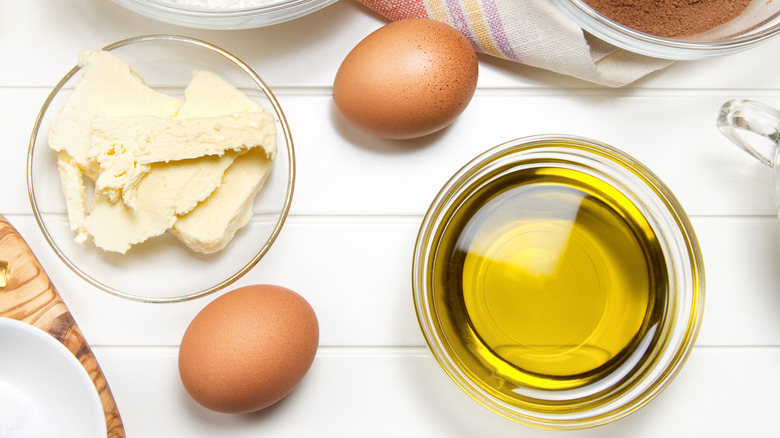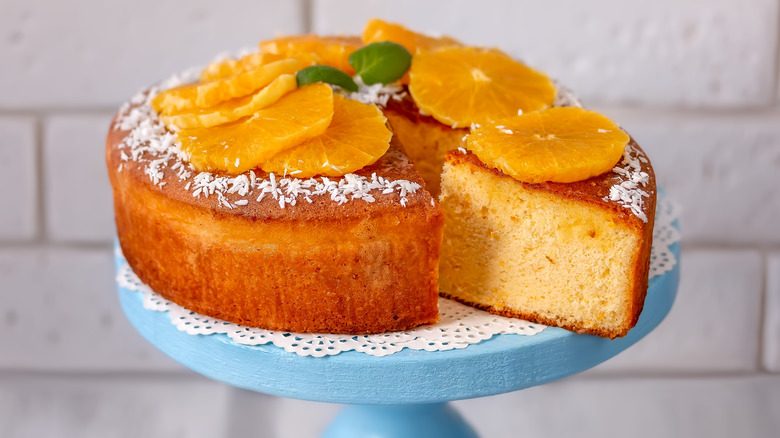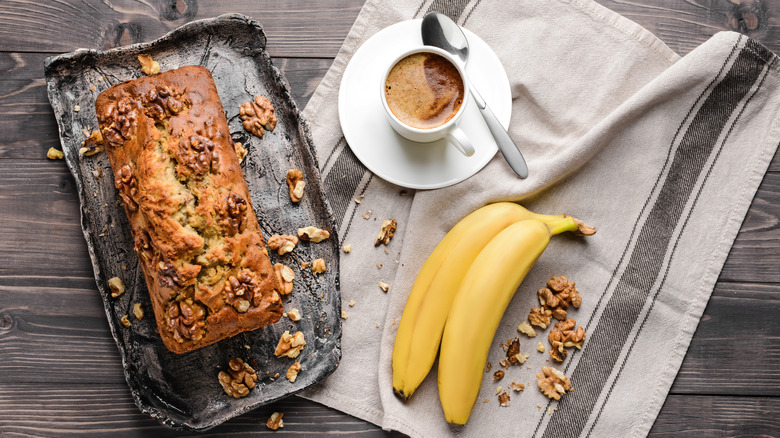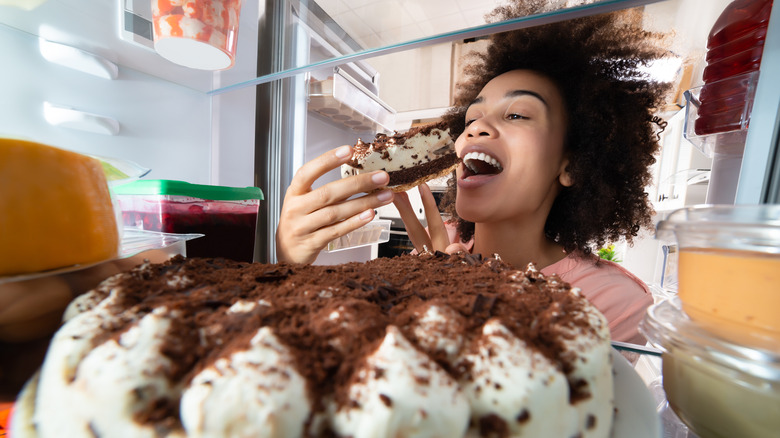When To Use Oil Instead Of Butter For Baking
Whether you're out of an ingredient or simply feeling experimental, substitutions can be tempting in baking. Either way, it's helpful to know how the substitution will affect your bake before you begin. In the case of swapping oil for butter, you may get a more delicate and tender texture with oil. At the same time, some say that the swap sacrifices butter's unbeatable taste. Yet, the choice between taste and texture isn't as simple as it seems. Ultimately, what you're baking and where you want the flavors to land determines whether exchanging oil for butter is a good idea.
When substituting any ingredient, knowing its role in your recipe is helpful. Both butter and oil are fats. It's no surprise that fats enhance flavor. According to WebExhibits, the more fat something has, typically, the better it tastes; this is due to how flavors of certain fat-soluble ingredients dissolve in fats.
But fats play a role in the texture and consistency of a bake as well. Fats, for instance, increase the softness of a dough or batter. As Loafy Bread explains, adding fats to bread dough creates a softer center as well as a softer crust. This texture is desirable for something like burger buns or a cinnamon roll, but would not be the ideal texture for a sturdier bread like sourdough baguette. This difference is because fats get in the way of water and flour, creating the gummy substance we know as gluten. The less gluten a baked good has, the lighter and less dense it is (via The Bread Guide).
How do butter and oil differ?
One of the significant differences between butter and oil is that butter is a saturated fat, whereas most oils are unsaturated fats. Saturated fats like butter remain solid at room temperature, explains Tessa Arias of Handle the Heat. In contrast, most oils remain liquid at room temperature. So, one easy way to determine whether butter is the right way to go is to look at your recipe to see if it requires creaming sugar and butter. If so, butter is most likely the best choice since you'll be able to get the desired results.
However, if your recipe doesn't require creaming butter and sugar, you have some room to play around. This scenario is when figuring out the desired texture of your bake comes in. Because oil stays a liquid at room temperature, the texture of baked goods that use oil is satisfyingly moist. Oil "can create a denser, richer product, which can be ideal in things like fudgy brownies or some cakes," pastry chef Rachel Rathget of Husk Nashville explained to HuffPost.
Moreover, some cakes require oil to achieve their signature textures, like a chiffon cake's "cloudlike texture" (per King Arthur Baking). Jessie Sheehan of The Washington Post points out that bakes using oil also have practical benefits. For example, creaming butter and sugar takes time and more dishes. Recipes using oil could ultimately be more efficient.
Weighing texture versus taste when baking
When substituting oil for butter, it's best to figure out your ideal texture. Consider whether decoration or structure requires a denser and sturdier bake or whether delicate, softer crumbs will be more satisfying. Then, take into account your ingredients. While butter and oil are both fats, they're comprised of different things. Oil is made up of only fat, whereas butter's other components will affect your bake.
Per Food52, butter also contains water — about 16-18%. As noted earlier, water bonds with flour to create gluten, which can cause a gummier, denser texture. But a denser bake doesn't mean it's inferior. In fact, sometimes, like in the case of tiered cakes, a denser butter-based texture is preferred to ensure it all holds together (via Epicurious).
Next, it's time to think about taste. Speaking with Epicurious, cookbook author Rose Levy Beranbaum noted that flavored oils provide excellent opportunities to experiment with bold flavors like citrus and spice. And as she explains, a little goes a long way, stating that extracts aren't "nearly as intense or pure as citrus oil."
Jessie Sheehan of The Washington Post suggests that nut oils can provide a more robust taste. She uses the example of how walnut oil in a banana walnut bread can create a satisfying combination. However, many bakers offer a word of caution about olive oil. Its taste is strong and distinct, so make sure the addition of olive oil enhances your flavors rather than overpowers them.
Finding a balance between taste, texture, and utility
What you're baking can determine whether butter or oil will enhance the flavor. For example, butter can mute strong flavors like chocolate or citrus, so using oil can help preserve your bake's taste, says Tessa Arias of Handle the Heat.
In fact, when it comes to chocolate cakes specifically, baker and food blogger Rose Levy Beranbaum suggests that a combination of oil and butter (at about a 1:5 ratio) can give you the desired flavor and lighter texture, since chocolate cakes are notorious for drying quickly (per Epicurious). All of that said, Arias performed an unofficial side-by-side test of both brownies and cupcakes, using butter and oil in two separate bakes for each. She and her taste-testers agreed that overall the brownies and cupcakes with butter tasted better.
Shelf-life and storage are also considerations. According to JoyofBaking.com, cakes made with oil can be refrigerated and still maintain their moist texture. Storing cake in the fridge is often seen as a last resort, since the air in the refrigerator is drier than the cake and can dry the cake out quickly — especially those low in fat. For oil-based cakes, though, this is less of an issue. Note that once refrigerated, baked goods made with butter require a waiting period of about an hour to get to room temperature.
Ultimately, the choice between butter and oil depends on your desired outcomes. Considering texture, taste, time, and storage will help you make the right (and most delicious) decision.



